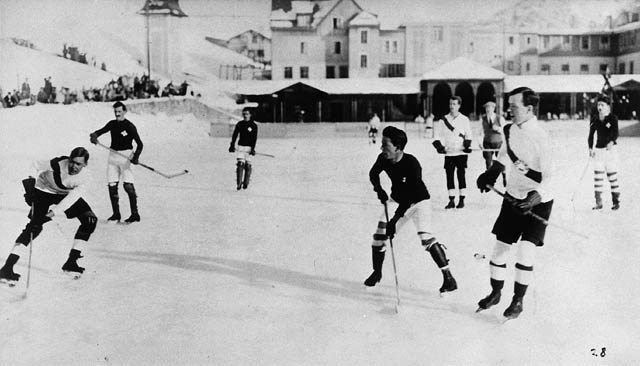Browse "Things"
-
Macleans
Canadian Troops Killed in Afghanistan
The road they died on could hardly even be called one.This article was originally published in Maclean's Magazine on October 13, 2003
"https://development.thecanadianencyclopedia.ca/images/tce_placeholder.jpg?v=e9dca980c9bdb3aa11e832e7ea94f5d9" // resources/views/front/categories/view.blade.php
https://development.thecanadianencyclopedia.ca/images/tce_placeholder.jpg?v=e9dca980c9bdb3aa11e832e7ea94f5d9
-
Macleans
Canadian Troops to Stay in Afghanistan
Their widows wept. A bagpiper played an old, sad song. The faces of comrades were ashen. Memorial services for fallen soldiers are, of course, painfully unique to the families and friends of the dead; but what they offer the nation is familiar ritual, perhaps a feeling of closure.This article was originally published in Maclean's Magazine on October 20, 2003
"https://development.thecanadianencyclopedia.ca/images/tce_placeholder.jpg?v=e9dca980c9bdb3aa11e832e7ea94f5d9" // resources/views/front/categories/view.blade.php
https://development.thecanadianencyclopedia.ca/images/tce_placeholder.jpg?v=e9dca980c9bdb3aa11e832e7ea94f5d9
-
Article
Canadian Tulip Festival
The Canadian Tulip Festival takes place in and around Ottawa every spring. It is one of the world’s largest tulip displays. During the festival, over a million tulips in over 100 varieties are in bloom in the National Capital Region. The festival’s origins lie in Canada’s role in both liberating the Netherlands and hosting members of the Dutch royal family during the Second World War. After the war, the Netherlands began presenting Canada with tulip bulbs in gratitude. This tradition continues to this day. The inaugural festival was held in 1953. (See also Liberation of the Netherlands.)
"https://d2ttikhf7xbzbs.cloudfront.net/media/media/dfc00133-dff7-48b9-8f7e-ac479d725143.jpg" // resources/views/front/categories/view.blade.php
https://d2ttikhf7xbzbs.cloudfront.net/media/media/dfc00133-dff7-48b9-8f7e-ac479d725143.jpg
-
Article
Canadian Union of Public Employees
The Canadian Union of Public Employees, founded 1963 with 86 000 members, is a merger of the National Union of Public Employees and the National Union of Public Service Employees.
"https://d2ttikhf7xbzbs.cloudfront.net/media/media/acbfaf0e-7ef4-4a2e-a236-43b684a47a72.jpg" // resources/views/front/categories/view.blade.php
https://d2ttikhf7xbzbs.cloudfront.net/media/media/acbfaf0e-7ef4-4a2e-a236-43b684a47a72.jpg
-
Article
Canadian University Music Society/Société de musique des universités canadienne
Canadian University Music Society(CUMS)/Société de musique des universités canadienne(SMUC); Canadian Association of University Schools of Music (CAUSM)/Association canadienne des écoles universitaires de musique (ACEUM) 1965-81.
"https://development.thecanadianencyclopedia.ca/images/tce_placeholder.jpg?v=e9dca980c9bdb3aa11e832e7ea94f5d9" // resources/views/front/categories/view.blade.php
https://development.thecanadianencyclopedia.ca/images/tce_placeholder.jpg?v=e9dca980c9bdb3aa11e832e7ea94f5d9
-
Article
Canadian Vitaphone Company
Canadian Vitaphone Company. Phonograph manufacturer located in Toronto 1913-16. Its product, the Vitaphone, was devised by the US inventor Clinton B. Repp and featured a wooden tone-arm and stationary sound-box. The company, headed by W.R.
"https://development.thecanadianencyclopedia.ca/images/tce_placeholder.jpg?v=e9dca980c9bdb3aa11e832e7ea94f5d9" // resources/views/front/categories/view.blade.php
https://development.thecanadianencyclopedia.ca/images/tce_placeholder.jpg?v=e9dca980c9bdb3aa11e832e7ea94f5d9
-
Article
Canadian Volunteers in the War of 1812
A band of Americans and pro-American Canadians living in Upper Canada, the Canadian Volunteers were a company-sized regiment that fought on the American side during the WAR OF 1812.
"https://development.thecanadianencyclopedia.ca/images/tce_placeholder.jpg?v=e9dca980c9bdb3aa11e832e7ea94f5d9" // resources/views/front/categories/view.blade.php
https://development.thecanadianencyclopedia.ca/images/tce_placeholder.jpg?v=e9dca980c9bdb3aa11e832e7ea94f5d9
-
Article
Canadian War Museum
The Canadian War Museum, Canada's national museum of military history, was opened in 2005 on the south bank of the Ottawa River. The museum, originally begun in 1880 as an informal collection of military artifacts, was moved in 1967 to an archives building on Sussex Drive with most of the collection stored off-site. In 2001, the Federal Government announced the decision to fund the construction of a state-of-the art new building to be situated in the LeBreton Flats area of downtown Ottawa. Designed by Moriyama & Teshima Architects in a joint venture with Griffiths Rankin Cook Architects, the Museum opened in May 2005. Appropriately, its opening coincided with the 60th anniversary of the end of World War II in Europe and also the 125th anniversary of the museum itself.
"https://d2ttikhf7xbzbs.cloudfront.net/media/media/1cd591e9-f99b-48ed-8934-7b6ed5602bd9.jpg" // resources/views/front/categories/view.blade.php
https://d2ttikhf7xbzbs.cloudfront.net/media/media/1cd591e9-f99b-48ed-8934-7b6ed5602bd9.jpg
-
Article
Canadian Wheat Board
The Canadian Wheat Board (CWB) was an agricultural marketing board headquartered in Winnipeg, Manitoba. Established in 1935, for much of its history it was the sole buyer and seller of Prairie wheat and barley destined for export from Canada or for human consumption in Canada. Referred to as the “single desk,” under this model it was illegal for farmers to sell their grain to anyone other than the CWB. Following a change in government policy, the single-desk model was discontinued in August 2012, and the CWB became a voluntary marketing organization. In July 2015, G3 Global Grain Group purchased a majority stake in the CWB, creating a new firm called G3 Canada Ltd. The company’s headquarters remain in Winnipeg.
"https://d2ttikhf7xbzbs.cloudfront.net/media/media/bf0ff346-6154-488a-85b0-dd37cabb5d2c.jpg" // resources/views/front/categories/view.blade.php
https://d2ttikhf7xbzbs.cloudfront.net/media/media/bf0ff346-6154-488a-85b0-dd37cabb5d2c.jpg
-
Article
Canadian Wildlife Federation
Canadian Wildlife Federation, national, nonprofit, nongovernmental conservation organization founded in 1961 and chartered in 1962.
"https://development.thecanadianencyclopedia.ca/images/tce_placeholder.jpg?v=e9dca980c9bdb3aa11e832e7ea94f5d9" // resources/views/front/categories/view.blade.php
https://development.thecanadianencyclopedia.ca/images/tce_placeholder.jpg?v=e9dca980c9bdb3aa11e832e7ea94f5d9
-
Article
Canadian Wildlife Service
The CWS focuses on 3 key areas reflecting its legislative mandate: migratory birds, species at risk and habitat.
"https://d2ttikhf7xbzbs.cloudfront.net/media/media/c69a8239-200e-4a58-9eac-691b6eb64f68.jpg" // resources/views/front/categories/view.blade.php
https://d2ttikhf7xbzbs.cloudfront.net/media/media/c69a8239-200e-4a58-9eac-691b6eb64f68.jpg
-
Article
Canadian Women's Press Club
The Canadian Women's Press Club (CWPC) was founded in June 1904 in a Canadian Pacific Railway Pullman car, aboard which 16 women (half anglophone, half francophone) travelled to the St. Louis World's Fair. All but one were working journalists who covered the event. Founding members included Kathleen “Kit” Coleman, Robertine Barry, Anne-Marie Gleason and Kate Simpson Hayes. The CWPC offered female journalists professional support and development in its mission to “maintain and improve the status of journalism as a profession for women.” In 1971, its members voted to admit men and the organization became the Media Club of Canada. In 2004, the club dissolved.
"https://d2ttikhf7xbzbs.cloudfront.net/media/media/bbf6b82e-747e-460d-a168-08f3d4652dc2.jpg" // resources/views/front/categories/view.blade.php
https://d2ttikhf7xbzbs.cloudfront.net/media/media/bbf6b82e-747e-460d-a168-08f3d4652dc2.jpg
-
Macleans
Canadians and Americans Think a Lot Alike
This article was originally published in Maclean’s magazine on October 17, 2005. Partner content is not updated.
"https://development.thecanadianencyclopedia.ca/images/tce_placeholder.jpg?v=e9dca980c9bdb3aa11e832e7ea94f5d9" // resources/views/front/categories/view.blade.php
https://development.thecanadianencyclopedia.ca/images/tce_placeholder.jpg?v=e9dca980c9bdb3aa11e832e7ea94f5d9
-
Article
Oxford University Ice Hockey Club
Through the formation of the Oxford University Ice Hockey Club (OUIHC), Canadian students at the University of Oxford helped bring Canadian hockey rules to prominence in Europe, thus influencing the development of British and European ice hockey. The OUIHC boasts many distinguished Canadian alumni in politics, finance and academia, including Prime Minister Lester B. Pearson, Governor General Roland Michener, the designer of the Maple Leaf Flag (George F.G. Stanley, lieutenant-governor of New Brunswick) and two governors of the Bank of Canada (James Coyne and Mark Carney).
"https://d2ttikhf7xbzbs.cloudfront.net/media/media/2142f239-78a7-4e4e-85ea-3264097ec28c.jpg" // resources/views/front/categories/view.blade.php
https://d2ttikhf7xbzbs.cloudfront.net/media/media/2142f239-78a7-4e4e-85ea-3264097ec28c.jpg
-
Macleans
Canadians Brace for West Nile Virus
STRESSED-OUT, Canadians are more than ready for summertime, when the living is, well, easier.This article was originally published in Maclean's Magazine on May 19, 2003
"https://development.thecanadianencyclopedia.ca/images/tce_placeholder.jpg?v=e9dca980c9bdb3aa11e832e7ea94f5d9" // resources/views/front/categories/view.blade.php
https://development.thecanadianencyclopedia.ca/images/tce_placeholder.jpg?v=e9dca980c9bdb3aa11e832e7ea94f5d9
